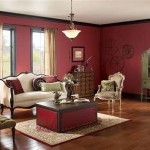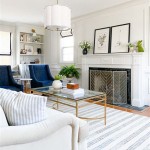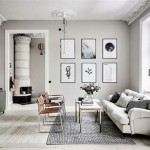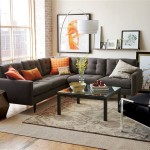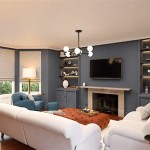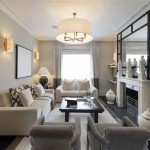Ideas To Paint A Living Room
The living room, often the central hub of a home, serves multiple purposes. It’s a space for relaxation, entertainment, and social gatherings. Consequently, the color palette chosen for this room profoundly impacts the overall atmosphere and the emotions it evokes. Selecting the right paint color requires careful consideration of factors such as room size, natural lighting, existing furniture, and personal preferences.
A well-chosen paint color can transform a living room from dull and uninviting to bright and welcoming. Conversely, a poorly selected color can make the room feel smaller, darker, or even psychologically unsettling. Therefore, exploring a diverse range of paint color ideas and understanding their impact is crucial before embarking on a living room painting project.
The following sections explore various paint color ideas for living rooms, categorized by their aesthetic effect and practical considerations, aiming to provide comprehensive guidance for homeowners seeking to enhance their living space.
Neutral Color Palettes: Timeless Elegance and Versatility
Neutral colors are characterized by their subtle and understated nature. They typically encompass shades of white, beige, gray, and off-white tones. Their appeal lies in their versatility, ability to create a sense of spaciousness, and their ease of integration with various decorating styles. Neutral palettes provide a calm and serene backdrop that complements a wide range of furniture, artwork, and accessories.
White, in its various shades, is a popular choice for living rooms. It reflects light effectively, making the room appear larger and brighter. Pure white creates a clean and modern aesthetic, while off-whites like cream and ivory offer a warmer and more inviting feel. The downside of white is its susceptibility to showing dirt and scuffs, requiring more frequent cleaning or the selection of more durable paint formulations.
Gray, another versatile neutral, offers a sophisticated and contemporary look. Lighter shades of gray provide a similar effect to white, expanding the perceived size of the room, while darker grays create a more dramatic and intimate atmosphere. Gray also serves as an excellent backdrop for bolder accent colors, allowing furniture and artwork to stand out.
Beige, a classic neutral, offers warmth and comfort. It’s a suitable choice for creating a cozy and inviting living room. Different shades of beige, ranging from light sand to deeper taupe, can be used to create visual interest and depth within the space. Beige pairs well with natural materials like wood and stone, enhancing the overall sense of warmth and tranquility.
When using neutral colors, consider the undertones. Whites and grays can have cool or warm undertones, which can influence the overall feeling of the room. For example, a gray with a blue undertone will create a cooler atmosphere, while a gray with a yellow undertone will feel warmer. Matching the undertones of the paint with the undertones of the furniture and accessories is essential for creating a cohesive and harmonious design.
Bold and Vibrant Colors: Making a Statement
For those seeking to create a more dynamic and expressive living room, bold and vibrant colors offer a powerful means of achieving this goal. Colors like blue, green, yellow, red, and orange can inject personality and energy into a space, reflecting the homeowner's unique style and preferences. However, using bold colors requires careful planning and consideration to avoid overwhelming the room or creating a visually jarring effect.
Blue, often associated with calmness and serenity, can be a refreshing choice for a living room. Lighter shades of blue, such as sky blue or turquoise, create a bright and airy atmosphere, while darker blues, like navy or royal blue, offer a more sophisticated and dramatic look. Blue pairs well with white, gray, and natural wood tones.
Green, reminiscent of nature, brings a sense of freshness and vitality to a living room. Lighter greens, like mint or sage, create a soothing and calming effect, while darker greens, like emerald or forest green, add depth and richness to the space. Green complements brown, beige, and other earthy tones.
Yellow, a cheerful and optimistic color, can brighten up a living room and create a welcoming atmosphere. Pale yellows, like lemon or butter yellow, are ideal for creating a light and airy feel, while brighter yellows add a pop of energy and excitement. Yellow pairs well with white, gray, and blue.
Red, a bold and passionate color, can add warmth and drama to a living room. It's best used as an accent color or in smaller areas, as too much red can be overwhelming. Burgundy or brick red offer a more subdued and sophisticated alternative. Red pairs well with white, gray, and black.
Orange, a vibrant and energetic color, can create a warm and inviting atmosphere. It's often associated with creativity and enthusiasm. Terracotta orange or burnt orange offer a more earthy and grounded feel. Orange pairs well with brown, beige, and green.
When using bold colors, consider the size of the room and the amount of natural light. Smaller rooms or rooms with limited natural light may benefit from using bold colors sparingly, as accent walls or in accessories. Larger rooms can handle more saturated colors without feeling overwhelming. Also, be mindful of the color's undertones and how they interact with the existing furniture and decor.
Creating Visual Interest with Accent Walls
An accent wall is a strategic approach to introduce a contrasting color or texture to a room, adding visual interest and creating a focal point. It’s an effective way to incorporate a bold color without overwhelming the entire space or to highlight a particular architectural feature. Carefully planning the placement and color choice of an accent wall is essential for achieving the desired effect.
The choice of wall to designate as an accent wall depends on the room's layout and the desired effect. Typically, the wall that is most visible upon entering the room or the wall behind a focal point, such as a fireplace or sofa, is a suitable candidate. Avoid choosing a wall with multiple windows or doors, as this can detract from the visual impact of the accent color.
The color of the accent wall should complement the existing color scheme of the room. If the room is painted in neutral colors, a bold and vibrant color can be used to create a striking contrast. If the room is already painted in a bold color, a more subdued or complementary color can be used to create a more balanced look. Consider using a darker shade of the same color as the other walls for a subtle but effective accent.
In addition to color, texture can also be used to create an accent wall. This can be achieved through the use of textured paint, wallpaper, or decorative panels. Textured walls add depth and dimension to the room, creating a more tactile and visually interesting experience.
Before committing to an accent wall, it's advisable to test the color and texture in a small area to ensure it achieves the desired effect. Paint a sample patch on the wall and observe it at different times of the day to see how it looks in different lighting conditions. This will help avoid costly mistakes and ensure that the accent wall enhances the overall aesthetic of the living room.
The use of geometric patterns on an accent wall is another way to add visual interest. Painting stripes, triangles, or other geometric shapes can create a modern and stylish look. This technique is particularly effective in rooms with a minimalist or contemporary design.
Considering Lighting and Room Size
The perceived color of paint can vary significantly depending on the lighting conditions of the room. Natural light enhances the true hue of a color, while artificial light can alter its appearance. Similarly, the size of the room plays a crucial role in how a color is perceived. Smaller rooms may benefit from lighter colors to create a sense of spaciousness, while larger rooms can handle darker or more saturated colors without feeling cramped.
Before choosing a paint color, assess the amount and type of natural light the room receives. Rooms with ample natural light can handle a wider range of colors, including darker shades. Rooms with limited natural light may benefit from lighter colors that reflect light and brighten up the space. Consider the direction the room faces, as this will influence the color temperature of the natural light. South-facing rooms receive warmer light, while north-facing rooms receive cooler light.
Artificial lighting also plays a significant role in the appearance of paint colors. Incandescent lighting tends to cast a warm, yellow glow, while fluorescent lighting casts a cooler, blue light. LED lighting offers a more balanced and neutral light that closely resembles natural daylight. Consider the type of artificial lighting that will be used in the room when choosing a paint color, and test the color under different lighting conditions to see how it looks.
The size of the room is another important factor to consider. Lighter colors tend to make a room feel larger and more open, while darker colors tend to make a room feel smaller and more intimate. In small rooms, it's best to stick to lighter colors or use darker colors sparingly as accent walls. In larger rooms, a wider range of colors can be used, including darker shades and more saturated hues.
Using a color wheel can be helpful in selecting colors that complement each other. Complementary colors, which are opposite each other on the color wheel, create a strong contrast and add visual interest. Analogous colors, which are next to each other on the color wheel, create a more harmonious and cohesive look. Consider the existing colors in the room, such as the furniture, flooring, and accessories, when choosing a paint color, and use the color wheel to find colors that work well together.
Ultimately, the best paint color for a living room is a matter of personal preference. Consider the desired mood and atmosphere, the existing decor, and the lighting conditions of the room when making a decision. Don't be afraid to experiment with different colors and techniques to find what works best for you. Painting a living room is a relatively inexpensive and easy way to transform the space and create a more enjoyable and inviting environment.

7 Charming Wall Painting Ideas For Living Room

Living Room Paint Ideas To Spruce Up Your Home Designcafe

9 Amazing Living Room Paint Ideas For An Affordable Makeover Décor Aid
.jpg?strip=all)
Two New Living Room Paint Colors Dream Green Diy

Living Room Paint Colors Ideas The Home

7 Living Room Painting Ideas The Ultimate Guide

190 Best Living Room Paint Color Inspiration Ideas In 2025

Living Room Paint Colour Ideas My Bespoke

3 Unique Painting Ideas For Your Living Room Gleco Paints Blog

5 Living Room Paint Color Ideas To Refresh Your Space Havenly Blog Interior Design

